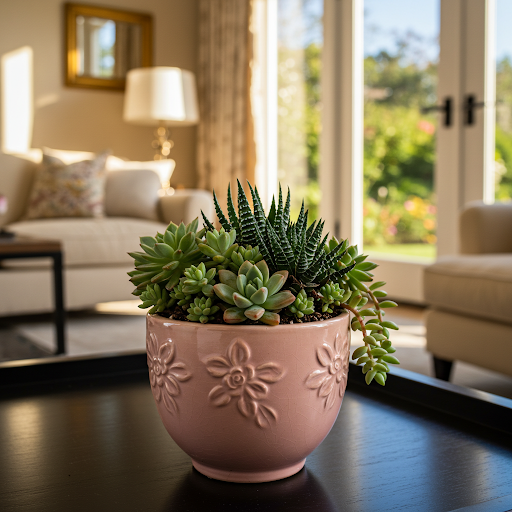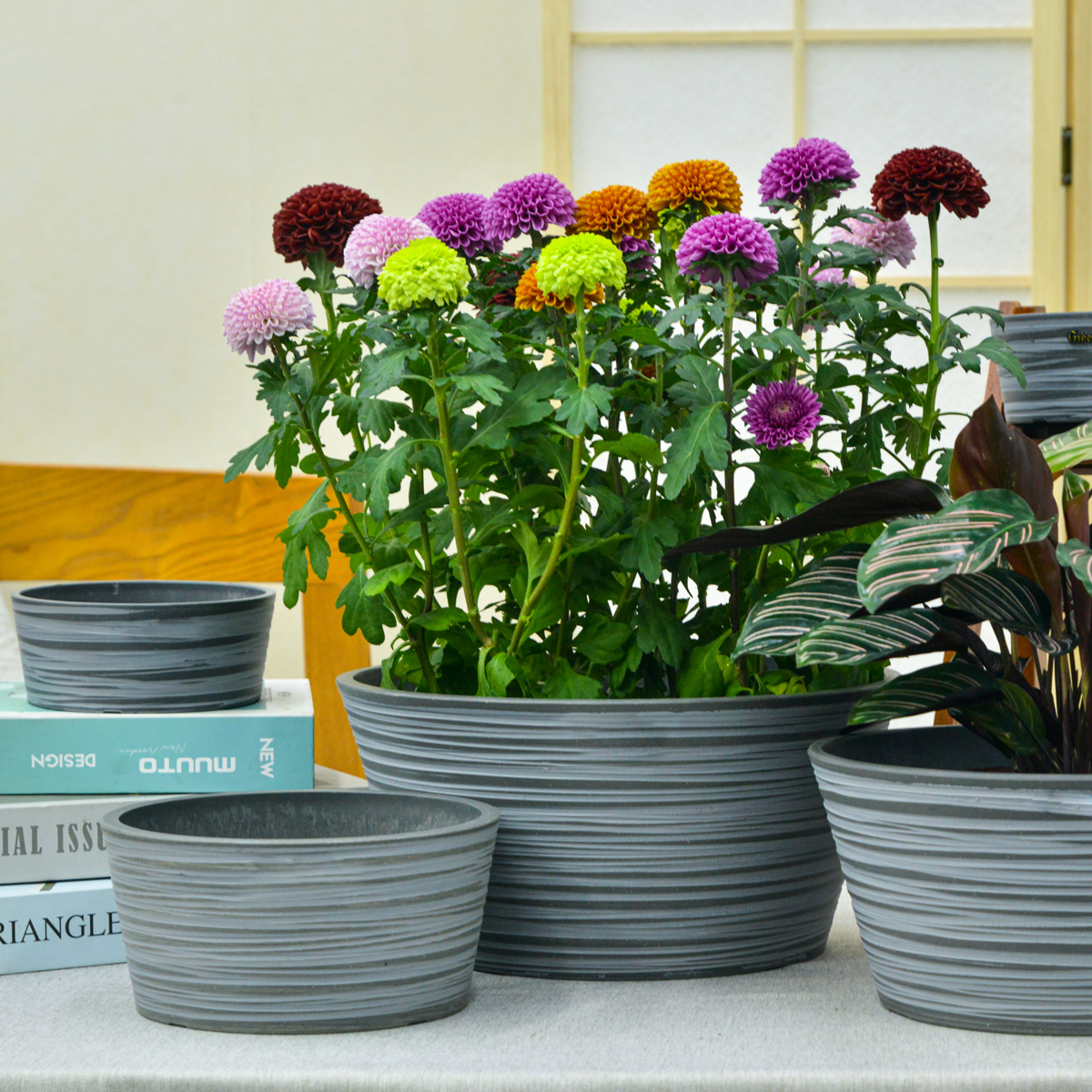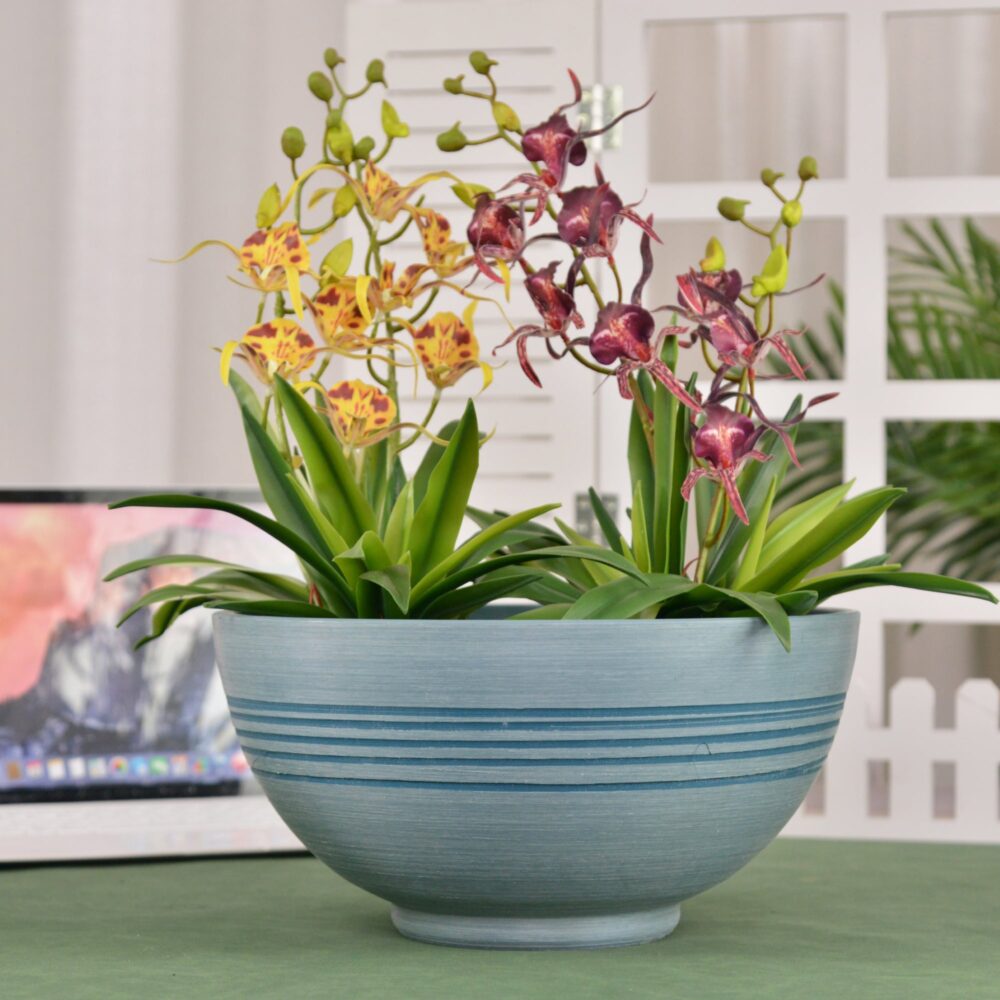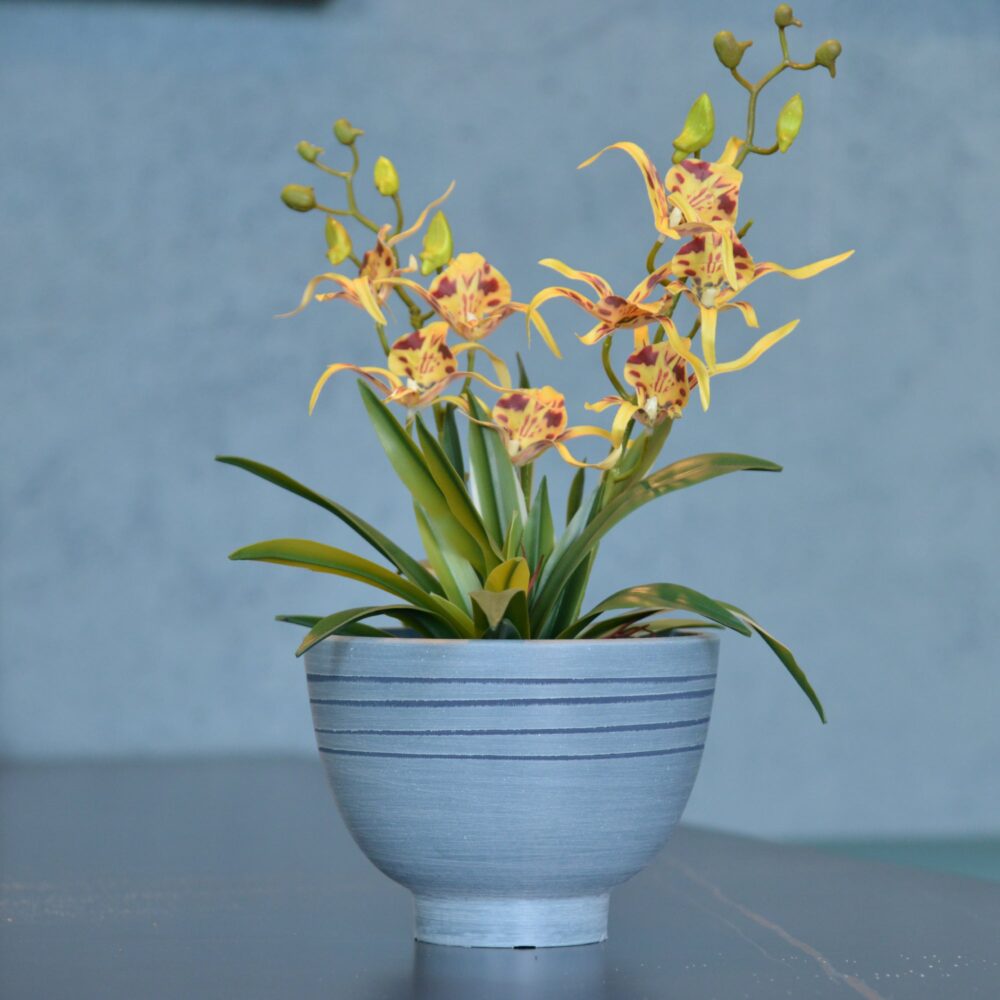The Ultimate Guide to Succulent Care: How to Grow Healthy & Happy Succulents Indoors & Outdoors
Succulents – with their fascinating shapes, vibrant colors, and low-maintenance reputations, it’s no wonder they’ve become incredibly popular among plant lovers. Whether you’re a seasoned plant parent or a budding beginner, succulents offer a rewarding gardening experience. But while they are often touted as “easy,” understanding their specific care needs is key to truly helping them thrive and avoid common pitfalls.
[Image of: A visually appealing flat lay of diverse succulents arranged on a bright, natural wood surface. The succulents vary in color, shape, and texture, and are potted in a variety of stylish terracotta and ceramic pots. Gardening tools like small trowels and pruning shears are subtly placed around the succulents to enhance the gardening theme. Sunlight is softly illuminating the scene.]
This ultimate guide will walk you through everything you need to know about succulent care, covering both indoor and outdoor environments. We’ll demystify watering, light requirements, soil needs, propagation techniques, and even delve into common mistakes to avoid. Get ready to unlock the secrets to successfully growing healthy and happy succulents that will bring beauty and low-maintenance greenery to your home and garden!
Understanding Succulents: More Than Just “Easy Plants”
Before diving into specific care tips, it’s helpful to understand what makes succulents unique:
Water Storage Masters: Succulents are characterized by their ability to store water in their leaves, stems, and roots. This adaptation allows them to survive in arid and semi-arid environments with infrequent rainfall. This water storage capability is what makes them drought-tolerant and, to some extent, forgiving of occasional neglect.
Diverse Family: The term “succulent” isn’t limited to one plant type. It encompasses a vast and diverse group of plants from various botanical families, including cacti, aloe, agave, echeveria, sedum, and many more. This diversity means that while general care principles apply, individual succulent species can have slightly different preferences.
Adaptable to Various Environments: While originating from dry climates, many succulents are surprisingly adaptable and can thrive indoors as houseplants, as well as outdoors in suitable climates.

Key Elements of Succulent Care: The Essentials
To ensure your succulents flourish, focus on these essential care elements:
1. Light: Sunshine is Their Best Friend (Mostly)
Bright, Indirect Sunlight Indoors: Most succulents crave bright light. Indoors, the ideal location is a south-facing or west-facing window that receives several hours of bright, indirect sunlight per day. Direct, intense afternoon sun through glass can sometimes scorch delicate succulents, so filter harsh afternoon rays with a sheer curtain if needed.
Gradual Acclimation to Outdoor Sun: Outdoor succulents generally love full sun, but if you’re moving indoor succulents outdoors for the summer or planting new ones, acclimate them gradually to increased sunlight to prevent sunburn. Start with a shady location and slowly increase their exposure to sun over a week or two.
Signs of Insufficient Light: Leggy growth (stretched stems), pale or faded color, and leaning towards the light source are all signs your succulent isn’t getting enough sunlight. Move it to a brighter location.
Succulents That Tolerate Lower Light: While most prefer bright light, some succulents, like snake plants (Sansevieria), ZZ plants (Zamioculcas zamiifolia), and certain Haworthia varieties, can tolerate lower light conditions, making them good options for less sunny indoor spaces.
2. Watering: Less is More – The “Soak and Dry” Method
The “Soak and Dry” Approach: The most crucial aspect of succulent care is proper watering. The key is the “soak and dry” method: Water thoroughly until water drains from the drainage holes, and then allow the soil to dry out completely before watering again.
Don’t Water on a Schedule: Avoid watering on a fixed schedule (e.g., “every week”). Succulents need watering based on soil dryness, not a set timeframe. Environmental factors like temperature, humidity, and light levels significantly affect how quickly soil dries out.
How to Check Soil Dryness: Insert your finger about 1-2 inches into the soil. If it feels dry, it’s time to water. If it feels moist, wait longer. You can also use a moisture meter for more precise readings.
Seasonal Watering Adjustments:
- Growing Season (Spring & Summer): Succulents actively grow during spring and summer and will need more frequent watering, potentially every 1-2 weeks depending on conditions.
- Dormant Season (Fall & Winter): During fall and winter dormancy, succulents require significantly less water. Reduce watering to once a month or even less, allowing the soil to stay dry for extended periods.
Signs of Overwatering: Mushy, translucent leaves (especially starting at the base), yellowing leaves, and soft, rotting stems are classic signs of overwatering and root rot. Reduce watering immediately and ensure good drainage.
Signs of Underwatering: Shriveled, wrinkled, or flattened leaves are signs of underwatering. The leaves may also feel thinner and less plump than usual. Water thoroughly.
3. Soil: Fast-Draining is Non-Negotiable
Succulent-Specific Soil Mix: Use a well-draining soil mix specifically formulated for succulents and cacti.These mixes are typically gritty and porous, containing ingredients like perlite, pumice, lava rock, or coarse sand to improve drainage and aeration.
Avoid Regular Potting Soil: Regular potting soil is often too dense and retains too much moisture for succulents, increasing the risk of root rot.
DIY Succulent Mix: You can create your own succulent mix by amending regular potting soil with perlite or pumice in a 1:1 or 2:1 ratio (perlite/pumice : potting soil).
Drainage Holes are Essential: Always plant succulents in pots with drainage holes. Drainage holes allow excess water to escape, preventing soggy soil and root rot. If your pot doesn’t have drainage, you can drill holes or use it as a decorative outer pot and plant in a plastic pot with drainage inside.
4. Planters: Terracotta & Breathable Materials are Ideal
Terracotta Pots: Terracotta (clay) pots are excellent for succulents because they are porous and allow for better airflow to the roots and faster evaporation of moisture from the soil. This helps prevent overwatering.
Ceramic, Plastic, & Glazed Pots: Ceramic, plastic, and glazed pots can also be used successfully, but be extra mindful of watering, as these materials retain moisture for longer. Terracotta is generally more forgiving, especially for beginners.
Pot Size: Match to Plant Size: Choose a pot that is appropriately sized for your succulent. As a general rule, choose a pot that is about 1-2 inches wider than the succulent’s root ball. Avoid overly large pots, as they can retain too much moisture. (See our detailed article on planter sizes for succulents!).
5. Temperature & Humidity: Warm & Dry is Preferred
Temperature: Most succulents thrive in typical room temperatures (65-80°F or 18-27°C) during the growing season. They can tolerate slightly cooler temperatures during their winter dormancy (down to 50-55°F or 10-13°C for many species). Avoid prolonged exposure to freezing temperatures, as most succulents are not frost-hardy.
Humidity: Succulents prefer low humidity. High humidity can increase the risk of fungal diseases and rot, especially if combined with overwatering. Good airflow and ventilation are beneficial.
6. Fertilizing: Less is More – Light Feeding in Growing Season
Infrequent Fertilizing: Succulents are not heavy feeders and don’t require frequent fertilization. Over-fertilizing can actually be harmful.
Growing Season Only: Fertilize lightly only during the active growing season (spring and summer). Avoid fertilizing during fall and winter dormancy.
Balanced, Diluted Fertilizer: Use a balanced, water-soluble fertilizer diluted to half or even quarter strength of the recommended dosage. Cactus or succulent-specific fertilizers are also available. Fertilize every 4-6 weeks during the growing season.
7. Propagation: Multiply Your Succulent Collection Easily!
Leaf Propagation: Many succulents, like Echeveria and Sedum, are easily propagated from leaves. Gently remove a healthy leaf, allow the cut end to callus over for a few days, and then place it on top of slightly moist succulent soil. New roots and a tiny plantlet will eventually sprout.
Stem Cuttings: Stem cuttings are another common propagation method. Take a stem cutting a few inches long, let the cut end callus, and then plant it in succulent soil.
Offsets/Pups: Some succulents, like Aloe and Haworthia, produce offsets or “pups” around the base of the mother plant. These can be carefully separated and potted up individually once they have developed some roots.
Common Succulent Care Mistakes to Avoid:
- Overwatering: This is by far the most common mistake and the biggest killer of succulents. Remember “soak and dry” and err on the side of underwatering rather than overwatering.
- Using the Wrong Soil: Regular potting soil is a no-go. Always use a well-draining succulent or cactus mix.
- Insufficient Light: Not providing enough light leads to weak, stretched growth and faded colors. Give your succulents plenty of bright, indirect sunlight indoors or gradually acclimate them to outdoor sun.
- Lack of Drainage: Planting in pots without drainage holes is a recipe for root rot. Ensure drainage is always present.
- Fertilizing Too Much: Over-fertilizing can lead to weak, leggy growth and salt buildup in the soil. Fertilize sparingly and only during the growing season.
- Ignoring Dormancy: Forgetting that succulents need a drier, cooler dormancy period in fall and winter and continuing summer watering schedules during winter months is a common error. Adjust watering significantly during dormancy.
Top Succulent Varieties for Beginners:
- Echeveria: Rosette-forming succulents in a rainbow of colors. Relatively easy to grow and propagate.
- Sedum (Stonecrop): Diverse genus with trailing, upright, and groundcover varieties. Many are cold-hardy and easy to propagate.
- Haworthia: Unique, often translucent-leaved succulents, tolerates slightly lower light.
- Aloe Vera: Medicinal and easy to grow, tolerates neglect.
- Sempervivum (Hens and Chicks): Cold-hardy and produces many offsets, very easy to propagate.
- Jade Plant (Crassula ovata): Classic, resilient succulent, tolerates some neglect.
- Snake Plant (Sansevieria trifasciata): Very low-maintenance, tolerates low light, air-purifying.
- ZZ Plant (Zamioculcas zamiifolia): Extremely drought-tolerant and low-light tolerant, nearly indestructible.

Conclusion: Enjoy the Rewarding World of Succulent Gardening!
With their incredible diversity and relatively straightforward care, succulents are a fantastic choice for any plant enthusiast. By understanding their need for bright light, infrequent but thorough watering, fast-draining soil, and proper pot selection, you’ll be well on your way to creating thriving succulent gardens both indoors and out. Embrace the beauty and low-maintenance charm of succulents and enjoy the rewarding journey of watching these fascinating plants flourish! Happy succulent gardening!
11THD
By greenship|2024-08-13T02:52:20+00:00August 13, 2024|Categories: Hand-carving Series|
20VD
By greenship|2024-08-13T06:43:41+00:00August 13, 2024|Categories: Hand-carving Series|
Modern Plant Pots with Drainage – Indoor & Outdoor Use (6″ Widths)
By greenship-seo|2025-04-10T06:29:43+00:00February 6, 2025|Categories: Hand-carving Series|Tags: Decorative Flower Pots|
HS
By greenship|2024-08-13T06:45:17+00:00August 13, 2024|Categories: Hand-carving Series|
13 inch Planter for Indoor Plants, Set of 2 Modern Decorative Plant Pots with Drainage Hole, Cute Bowl Shape Flower Pots
By greenship-seo|2025-04-10T07:41:46+00:00January 10, 2025|Categories: Hand-carving Series|Tags: Decorative Flower Pots, Self-Watering Pots|
8 inch/10 inch Planter Indoor Plants, 2 Pack Modern Decorative Plant Pots with Drainage Hole, Cute Bowl Shape Flower Pots
By greenship-seo|2025-04-10T08:03:42+00:00January 9, 2025|Categories: Hand-carving Series|Tags: Decorative Flower Pots, Self-Watering Pots|






